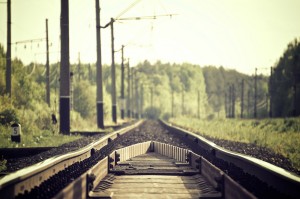IFA 2015, the world’s leading trade show for consumer electronics and home appliances, took place from September 4 to 9 in Berlin. During its 91-year history, the event opened up the doors to a whole new world of technologies and advanced engineering products. This year, the IFA exhibition showcased the latest developments in the fields of computing devices, smartphones, wearables, and connected home appliances. The last mentioned attracted significant public interest due to the growing demand for home automation products. By 2022, a typical family home could contain more than 500 smart devices, Gartner predicts¹. Continue Reading
All Categories
Specifics of Effective GUI Development for Internet of Things
When we talk about the devices that make up the Internet of Things (IoT), what comes to your mind? Smartphones, wearables, light bulbs, refrigerators, thermostats, smoke sensors, infotainment systems – the list can be endless. These connected devices became an integral part of our daily lives and their number will continue to increase year after year, according to the experts’ forecasts.
As human interactions with connected devices become stronger, GUI developers face challenges each day when designing for IoT. Continue Reading
Specifics of Effective GUI Development for Medical Devices
Medical devices have to be designed so that people can use them easily and reliably in order to simplify the prevention, diagnosis and treatment of diseases. Development of convenient graphical user interface (GUI) for medical devices is especially important, as low usability of UI may have dramatic consequences.
Numerous studies have confirmed that poorly designed medical device interfaces has a significant impact on the growth of the use errors and may represent a hazard to human health and life. Continue Reading
Role of Positive Train Control in Rail Safety
Under the Rail Safety Improvement Act, all freight and commuter railroads in the United States are to be equipped with Positive Train Control (PTC) systems by the end of 2015. This decision was taken by Congress in 2008 and is intended to improve safety of rail transport by reducing the risk of human error. It is expected that these measures will contribute to the prevention of train-to-train collisions, over-speed derailments, train movement through a switch left, and to the protection of roadway workers and their equipment. Continue Reading
Excellence, Professionalism, Experience: PSA’s Team in Numbers (infographic)
PSA’s ever-expanding team consists of strong individuals, each with a wide range of technical skills and proficient competences to deliver a quality work across various industries. Over 40% of our specialists have more than 10 years of experience in software and hardware engineering, and 65% hold a professional qualification at a senior level and higher.
These and other key indicators of PSA’s team excellence, professionalism and experience are reflected in the infographic below. The statistical data is relevant as of June 1, 2015. Continue Reading




